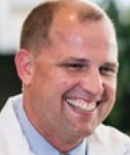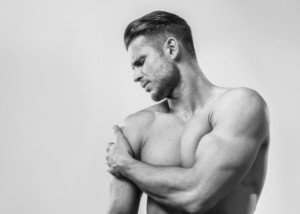
Have you found that your rotator cuff pain has really kicked up since you began your after surgery rehabilitation?
There are reasons for this.
Okay, so it’s been around three months since you had your rotator cuff surgery, and you now have new-onset (acute) pain – for seemingly no reason.
And at times, it hurts to high heaven, making you wonder if your surgeon indeed “butchered” you.
“Pain following rotator cuff repair is very common,” begins John-Paul H. Rue, MD, orthopedic sports medicine surgeon with Orthopedics and Joint Replacement at Mercy Medical Center in Baltimore, MD.
“Most of the time, the normal postoperative pain after rotator cuff repair will diminish within a few days to weeks,” continues Dr. Rue.
Then what’s with the acute pain three months out from surgery?
“But as you begin physical therapy, new pains can develop,” says Dr. Rue. “The majority of this pain is from inflammation or stiffness and scarring and will resolve with time, ice, NSAIDs and other common rehabilitation modalities.”
Years ago my mother – who has always hated exercise and never did any – had surgery for a torn rotator cuff.
She then attended physical therapy – briefly — and never allowed it to get off the ground due to the pain.
She avoided the home exercises. She blamed the ongoing pain on the “butcher job” that she believed the surgeon had performed.
In her case, and no doubt this applies to many patients, the pain never went away after the surgery.
For a very long time she complained about the “butcher job,” and eventually had a second surgery by a different doctor.
Need I tell you that once again, she dissed physical therapy (remember, she has always detested exercise) and blamed the non-resolved pain on a second “butcher job.”
DO NOT THINK THIS WAY.
I warned my mother repeatedly that she must stick out the physical therapy. This advice (pardon the cliché) fell on deaf ears.
No PT whatsoever for that shoulder, and since then she has had “pain attacks,” though there can be long periods of time without pain. Due to lack of exercise, her shoulders have always been very weak.
Dr. Rue also explains, “Sometimes the inflammation can be severe and limit motion. In these cases, additional treatments and even possibly additional surgery to manipulate the shoulder to regain motion may be required.
“If the severe pain is associated with infection, with fever or wound problems such as persistent drainage, redness or swelling, your surgeon may recommend treatment with antibiotics, or in rare cases, repeat surgery to wash out the infection.”
In the absence of an infection, you must ask yourself how committed you are to the physical therapy. Yes, it hurts. Sometimes people cry during PT sessions for various body parts. If it didn’t hurt it probably wouldn’t help.
So stick it out. Don’t give up. The rotator cuff (four tendons and their accompanying muscles) is notoriously stubborn and takes a very long time to heal.
If you’re still having pain three months out from surgery, or you have new (acute) pain, this is most likely par for the course.
 Dr. Rue specializes in prevention and treatment of sports and exercise injuries. His primary focuses are knee, shoulder and elbow injuries including ACL and cartilage injuries, rotator cuff injuries and overuse tendonitis.
Dr. Rue specializes in prevention and treatment of sports and exercise injuries. His primary focuses are knee, shoulder and elbow injuries including ACL and cartilage injuries, rotator cuff injuries and overuse tendonitis.
 Lorra Garrick is a former personal trainer certified through the American Council on Exercise. At Bally Total Fitness she trained women and men of all ages for fat loss, muscle building, fitness and improved health.
Lorra Garrick is a former personal trainer certified through the American Council on Exercise. At Bally Total Fitness she trained women and men of all ages for fat loss, muscle building, fitness and improved health.
.


























